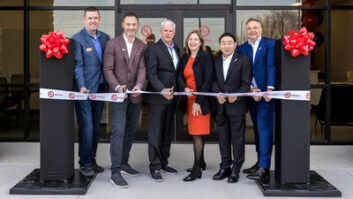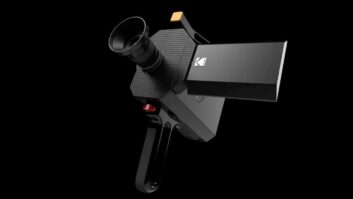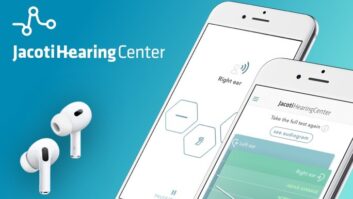LAS VEGAS — Forget about smartphones. Things are hot.
The Internet of Things (IoT) was a central topic at CTIA’s recent Super Mobility Week, including Internet-connected cars, home-automation systems and wearables.
Connected cars will account for a significant segment of the Internet of Things (IoT) and become must-haves for a large number of motorists to offer OnStar-like emergency services, Internet radio without a Bluetooth-connected smartphone, and in-car Wi-Fi hot spots, wireless and car industry executives said during the show. Embedded LTE could also deliver LTE Broadcast video services to backseat entertainment systems.
The show also saw separate tiers emerging in smart watches, with some designed to be tethered to a smartphone via Bluetooth and others operating as standalone devices with built-in cellular communications.
IoT product announcements included plans by AT&T to offer a second-gen Filip wearable cellphone/GPS-locator for kids. The carrier also announced plans to offer 3G cellular data service for the planned My Intelligent Communication Accessory (MICA) wearable, a woman’s bracelet designed by fashion retailer Opening Ceremony and engineered by Intel. Both are due later this year.
For its part, Alcatel OneTouch went outside the Sands Convention Center to show its first smart watch along with an expanded line of cellular-equipped tablets, including three new models with LTE. The company also unveiled an E Card, or portable black-and-white reader with 4-inch e-Ink display. It’s intended mainly for use as a companion device for a Bluetooth-connected phablet.
By far, connected cars are piquing consumer interest more than connected wearables, at least so far.
Ralph de la Vega, president/CEO of AT&T Mobility and Business Solutions, cited a Strategy Analytics forecast that 32 percent of cars globally will be connected by 2017 and that 60 percent of U.S. cars, or 10 million, will be connected by that year.
A survey conducted in five countries for AT&T and Ericsson found that half of all drivers would switch vehicle brands to a comparable brand to get Connected Car services. Seventy-two percent would delay a car purchase by one year to buy a car with connected services from their preferred brand.
In the U.S., 67 percent of surveyed drivers indicated they would probably or definitely buy connectivity or Wi-Fi service if available in their car. The survey, conducted by Ipsos in July and August, was based on consumers likely to purchase a car in the next five years in the U.S., Germany, Brazil, Japan and China.
Six connected-car features enjoy a high level of consumer awareness, the survey also found. Seventy-four percent were aware of roadside assistance, 72 percent were aware of navigation and real-time traffic, 71 percent were aware of remote starting from a cellphone, 70 percent were aware of streaming music, 52 percent were aware of usage-based insurance tracking, and 50 percent were aware of in-car hot spots.
The numbers point to “a new wave of opportunity for wireless,” de la Vega said during a panel. Vehicles “will be one of the most significant elements in the Internet of Things.” Wireless connectivity will make the cars safer, more intuitive for drivers, and more entertaining for passengers, he said.
General Motors is well on the way to making connected cars commonplace. By the end of the year, all of the more than 33 models among GM’s four brands will be equipped with embedded LTE, said Mary Chan, GM’s president of the global connected consumer. The rollout, which started in July, is not just about building a Wi-Fi hot spot into a vehicle but delivering safety and security, she said during the panel with de la Vega. Using embedded cellular is safer than pulling out a smartphone, connecting it via Bluetooth to a factory infotainment system, and using its UI to access content, she said.
Added AT&T Mobility CEO Glenn Lurie: “The car is becoming a smartphone on wheels.”
Although consumer interest is high in connected vehicles, interest in connected wearables isn’t nearly as high. The industry is in need of “convincing people that the smart watch does something useful,” said Eddie Hold, VP of Connected Intelligence at The NPD Group, during a wearables panel.
One way to stimulate smart-watch sales is to embed them with cellular connectivity, in some cases adding the same phone number as a user’s smartphone to open up a new tier of use cases, said Chris Penrose, AT&T’s senior VP of emerging devices.
In an interview, he pointed out that AT&T plans to “productize” Cascade Project technology in six to nine months to “twin” multiple devices to a single phone number, such as a phone and smart watch or phone and car. On twinned smart watches, users would be able to see the same messages that they receive on their smartphone, or even receive a phone call directed to their phone.













